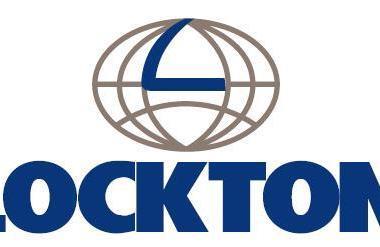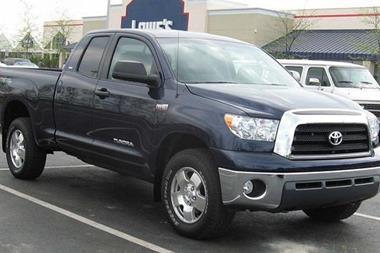Product recalls are becoming more common – and often make the headlines (think Toyota). So why do so many businesses shun the insurance that could come to their rescue?
Product recalls must be near the top of any list of nightmares likely to keep industry leaders from getting a good night’s sleep. Take a quick glance at the latest headlines and chances are that you will spot details of a scandal hitting a known brand – accompanied by a photo of a shamefaced chief executive.
The number of recalls has escalated in recent years, costing businesses millions, damaging reputations and making consumers increasingly wary. Toyota is the most high-profile casualty this year: it is facing a public relations crisis and a 20% drop in share price after having to recall 8.5 million cars following incidents with faulty accelerators. Fellow brand giants Honda, McDonalds, Nestlé and Johnson & Johnson also have fallen foul of quality standards.
According to the European Commission, the number of notified products recorded by the EU recall registration system, Rapex, quadrupled from 468 in 2004 to 1,993 in 2009; last year, there was a 7% jump compared with 2008. Children’s toys top the list, while the main risks associated with faulty products include injury from chemicals, choking, electric shocks and strangulation. Recently, a faulty product gave rise to the largest group action in British history when 2,000 consumers sued 14 stores after being burnt by a toxic chemical in sofas.
Food and drink recalls have also increased steadily over the past decade following outbreaks of mad cow disease (BSE) in the UK, Japan and the USA, and scares sparked by salmonella and E. coli poisoning. Increased dependence on imported goods from developing countries, a globalised supply chain and tighter EU and US regulations means that businesses are more susceptible than ever to product recalls, putting the onus on insurers to come to their rescue.
New directives
One of the major factors behind this surge is stricter regulation. New EU directives in 2005 tightened up requirements around announcing and carrying out recalls; now a company must inform a government body immediately if there is any hint of an issue with a product. Aon Crisis Management global managing director Christof Bentele says this has led to local authorities over-reacting to minor problems. “While this is done with the best intentions and the interests of the consumer at heart, the commercial reality means that a product that may ultimately be non-harmful still comes under the spotlight.”
A greater number of inspections has also increased the number of call-backs. XL’s global recall manager Ed Mitchell says: “A regulator will more easily find errors in your business – and therefore require a recall. Since 2005, the number of recalls escalated significantly, certainly on the food and drinks side.”
US restrictions have also tightened. This year, the US Food and Drug Administration (FDA) recalled 10,000 products containing flavour enhancer HVP – the biggest recall in its history. Meanwhile, proposed food safety legislation will give the FDA and other regulatory bodies increased powers for precautionary recalls.
Cunningham Lindsey head of product recall and liability Andrew Robinson says product recall claims are already up 300% compared with last year. He puts the surge down to the general trend for more call-backs but also increased take-up of cover by worried businesses.
Increased reliance on goods from China, India, Taiwan and Vietnam – where quality standards can be lower – also plays a part. Rapex figures show that 60% of the 1,993 products notified in 2009 were made in China, possibly the result of businesses importing goods. “There are constant drivers to achieve cost savings,” Robinson says. “How often do supermarkets boast how competitively priced they are? That can only be achieved by reducing manufacturing costs by sourcing goods from overseas – sourcing where you haven’t got the same degree of control.”
While the Chinese government is making efforts to align regulatory standards with the EU and the USA, Mitchell says that the lack of expertise in manufacturing, lack of resources, and a greater potential for tampering remain big problems. Indeed, one of the biggest, and deadliest, recent scandals was uncovered in 2008 when Chinese manufacturers were found to be adding the toxic chemical melamine to milk and infant formulas. to boost protein levels. At least six people are thought to have died as a result.
Bigger supply chains
But fault does not always rest at the product’s source of origin. Allianz Global Corporate & Specialty head of liability Will Morris says that today’s bigger supply chains have led to greater duplication of problems. “There is more potential that if one thing goes wrong, it can be in many more products than it was 10 or 15 years ago.”
Unsurprisingly, food products remain one of the biggest sources of concern. Despite increased emphasis on quality standards, food and beverages are always vulnerable to new and evolving forms of contamination. As Lockton’s executive director Ian Harrison explains: “We had a problem with E. coli contamination of meat products five or six years ago before the industry became very good at handling the risk. Then we had problems with salmonella; then with listeria. It’s a constantly moving target.”
Robinson says that reduced food packaging to meet new environmental standards has also led to recalls as companies have trouble grappling with new processes. “There is a lot of work being done to achieve lighter, smaller packaging … and sometimes the work that’s done in relation to that goes wrong,” he says. “The drive to reduce waste is well intentioned but change can lead to problems if these changes are not well managed and controlled.”
High-profile product recalls and tighter regulations certainly have businesses worried. Allianz Global Corporate & Specialty reports a 50% rise in enquiries about product recall insurance this year compared with last year, while XL has reported a 30% year-on-year increase in business. But, despite the increased interest, overall take-up remains remarkably low. Robinson estimates that as little as 5% of UK businesses have adequate product recall cover. And even if they do take it up, it might not be enough to meet the costs of a recall.
In certain cases, especially in the USA, government bodies may demand a precautionary recall. But the company concerned may not be entitled to claim any costs if there is no evidence to show the product caused immediate injury to a consumer. XL has enhanced its recall insurance in the USA to meet this gap in cover – and Lockton’s Harrison argues there is scope to extend this expansion to the EU.
Recalls set to increase
All agree that as regulation tightens and consumers become more savvy, the number of recalls will grow. Increasingly, major retailers are stipulating that suppliers have adequate product recall and crisis management plans in place before signing contractual agreements. Chartis’s crisis management liabilities division manager, Scott Keane, says: “With businesses facing tough economic conditions, and with pressure on costs and margins, it is very easy for them to think that this sort of additional insurance spend is a luxury they can’t afford.
“But that could be a false economy that may cost them dearly. For example, if a supplier loses a major contract with a supermarket or other retailer because of a recall, then it might be the difference between ongoing trading or going out of business.”
Harrison echoes this warning. “In the UK and Europe, the take-up from food, drug and consumer goods companies is still very low.
There is a continuing issue of a lot of companies burying their heads in the sand. It’s the classic situation that they don’t believe it will happen to them,” he says.
But Keane says that ultimately the onus is also on the insurance industry to help businesses deal with these risks. “The first key step is letting them know that there is a product that can help – and that help involves risk mitigation as well as financial and other support. It is alarming how few businesses know that the product exists. We really need to work with our brokers to get this message out.” IT





































No comments yet